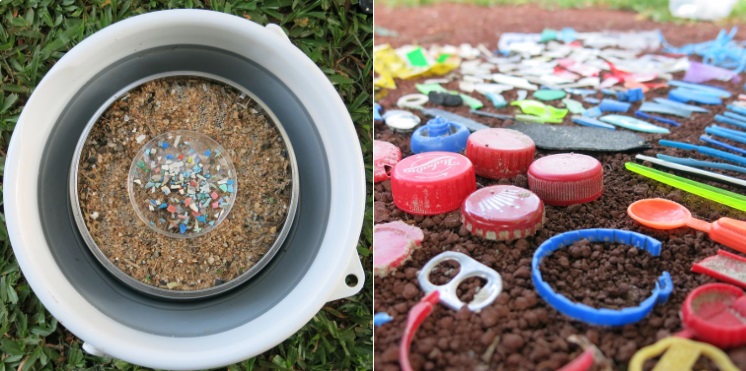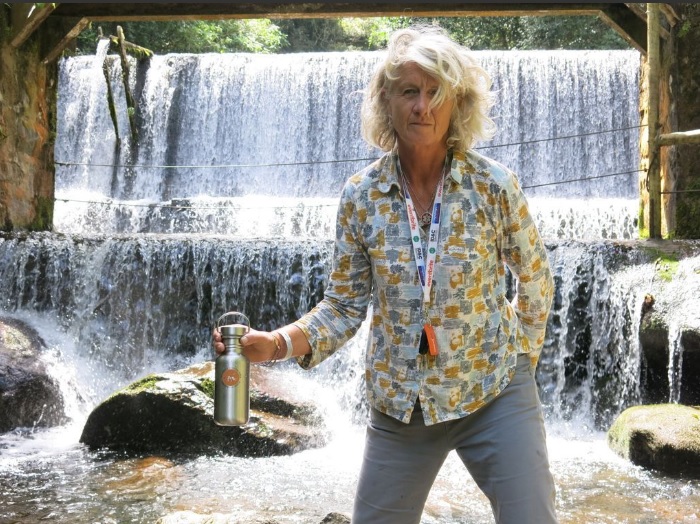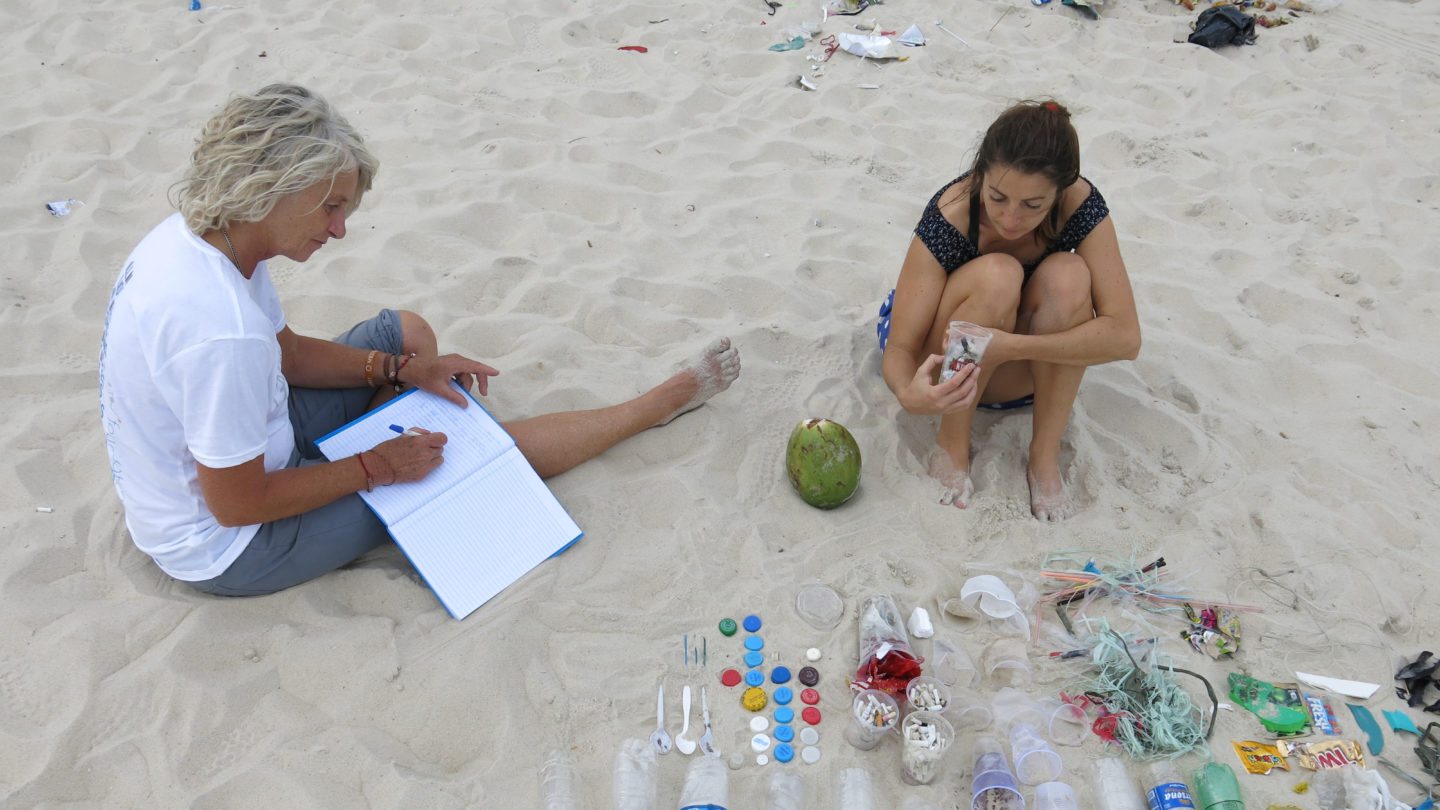It’s been over a month since our founder, Melinda Watson, started her plastic expedition of South America, RAW in South America. Melinda’s epic expedition is taking her from Salvador to Lima and into the Amazon – a five-month journey in total.
She’s on a mission to track South America’s plastic footprint; to log the plastic she finds and analyse the microplastics not seen by the human eye. Travelling with her trusty quadrant (a square, wooden frame), Melinda is recording details of all the plastic samples found when it is dropped to the ground.
Beach devastation
There have already been highs and lows, like the staggering beach transect of single-use pointless plastic pollution at Regência, Linhares where the Rio Doce meets the ocean and at Santos, where they found high levels of microplastics too. It’s all arranged so beautifully in Melinda’s pictures, but the scale and the variety of plastics found here is truly disheartening.

“The worst beach we’ve seen so far is in Brazil’s Preserve A Natureza, Piúma, where much of the local population make a living from fishing and shellfish. We wouldn’t eat the fish here if we were paid,” says Melinda.
Saving sea turtles
Melinda and her team had mixed emotions when they visited the biological reserve of Comboios in Linhares, Brazil – headquarters to the brilliant ICMBio Tamar Project. The project’s main objective is to protect endangered Loggerhead, Leatherback and Olive Ridley sea turtles from extinction.
“It was so positive to meet Jose Maciel dos Santos ICMBio, but he told us that they released 40,000 baby sea turtle hatchlings in 2017 – of which they expect only around 3% to survive. Necropsies showed plastic in the stomach or intestines of all sizes of dead sea turtles.”
Inadequate infrastructure
One of the main things that has struck the team on their travels so far is the problem with local infrastructure. In Brazil’s Nova Vicosa, inadequate clean water supplies means that locals rely on masses of bottled water in order to stay hydrated.
And, when it comes to recycling there is clearly money to be made from single-use plastic, judging by the volume of plastic collected and bundled up. “Locals scour the roads for throwaway rubbish everywhere,” says Melinda. “But how much is it worth?” And is this creating a need for single-use plastics to fuel the local economy, instead of looking for solutions to prevent it at the start of the supply chain?
From fly-tipping en-route from Caraiva to Caravelas, to the proliferation of western single-use brands, Melinda is seeing how plastics affect South America on so many different levels.
Help us share the story

We’ll continue to follow Melinda’s plastic expedition of South America and post about her findings here, to keep everyone informed about the extent of the global plastic problem. Please read, share and follow RAW Foundation on Twitter and help us raise awareness and spread the word.
Photographs by: Can Yaman




